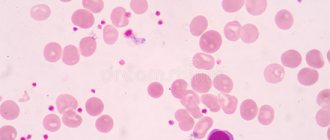We'll tell you which products you shouldn't take risks with - even if they seem completely safe.
If you have diabetes, impaired glucose tolerance, or are overweight, you should avoid processed foods and sugary treats to keep your glucose levels in check. But there are foods that increase sugar, which are classified as healthy foods. They should be consumed in strictly limited quantities.
Why is it important to control your sugar levels?
Maintaining stable plasma glucose levels and avoiding spikes and drops is important. A sharp increase in sugar levels is harmful to health.
- The body releases excess insulin to move glucose into cells. Constant stress on this mechanism can provoke insulin resistance, which triggers diabetes.
- Sudden attacks of hunger may occur.
- The body accumulates large amounts of fat.
Many foods are marketed as beneficial for blood sugar levels, even though they have significant effects on plasma glucose. Even the healthiest ones can cause sudden spikes in sugar, which is especially important for people with diabetes. Study the list to regulate the amount of these foods in your diet.
Gender characteristics
For men
In men, glucose usually decreases after exercise. This happens especially often if you run to the gym immediately after work, forgetting to eat. Therefore, before classes, you must definitely drink the same protein-carbohydrate cocktail. If you look at the glycemic index of sports nutrition, it is quite high. This means that these products will increase sugar and ensure the effectiveness of the workout.
In second place among the reasons is alcohol abuse and, as a result, dehydration of the body. Therefore, the next day, when you have a hangover, you definitely need to eat foods that raise your sugar levels quite significantly.
For women
Hypoglycemia is usually diagnosed in women after 50, during menopause. Therefore, they feel overwhelmed and tired. This is due to hormonal changes in the body. Foods that increase glucose levels can normalize your well-being.
A sharp decrease in glucose is often observed in pregnant women. The same hormones are to blame, as are the expectant mothers themselves, who need to do everything: go to maternity school, buy a stroller, and cook dinner for their husband. If hypoglycemia is diagnosed in women during pregnancy, they are prescribed a special diet, and attacks are stopped with the same sweets (refined sugar or candies).
Fresh fruit juice
Fruit juice has been promoted for decades as an all-natural, healthy drink that's just as good as whole fruit. But 1 fresh orange provides fiber, carbohydrates and vitamins while delivering only 15 grams of carbohydrates.
Fruit juice doesn't provide as much fiber and nutrients, but does have 45 grams of carbohydrates per glass. It can only be used for hypoglycemia, when you need to quickly decide how to increase your sugar. It is better to use fresh and frozen fruits in your daily diet. They contain fewer light carbohydrates.
Fully or partially limited products
The following are completely excluded from the diet: baked goods made from butter and puff pastry, curd mass, sweet desserts and ice cream, rice, semolina and pasta, as well as milk soups with these cereals. You should not consume sweet juices (grape, apricot, pear), sugar-filled lemonades, preserves and jams.
Not only foods rich in carbohydrates are prohibited, but also fatty ones: fatty broths, duck meat, goose, pork, smoked meats, sausages, fatty fish, canned food with butter, fatty and hot cream sauces.
It is advisable to prepare dishes without salt and sugar and exclude salted cheeses and pickled vegetables. Liver and dishes made from it, egg yolks, honey and spices (pepper, horseradish, mustard) are allowed in limited quantities.
Table of prohibited products
| Proteins, g | Fats, g | Carbohydrates, g | Calories, kcal | |
Vegetables and greens | ||||
| carrot | 1,3 | 0,1 | 6,9 | 32 |
| beet | 1,5 | 0,1 | 8,8 | 40 |
| horseradish | 3,2 | 0,4 | 10,5 | 56 |
Fruits | ||||
| apricots | 0,9 | 0,1 | 10,8 | 41 |
| pineapples | 0,4 | 0,2 | 10,6 | 49 |
| bananas | 1,5 | 0,2 | 21,8 | 95 |
| melon | 0,6 | 0,3 | 7,4 | 33 |
| mango | 0,5 | 0,3 | 11,5 | 67 |
Berries | ||||
| grape | 0,6 | 0,2 | 16,8 | 65 |
Nuts and dried fruits | ||||
| raisin | 2,9 | 0,6 | 66,0 | 264 |
| dried figs | 3,1 | 0,8 | 57,9 | 257 |
| dates | 2,5 | 0,5 | 69,2 | 274 |
Cereals and porridges | ||||
| semolina | 10,3 | 1,0 | 73,3 | 328 |
| rice | 6,7 | 0,7 | 78,9 | 344 |
| sago | 1,0 | 0,7 | 85,0 | 350 |
Flour and pasta | ||||
| pasta | 10,4 | 1,1 | 69,7 | 337 |
| noodles | 12,0 | 3,7 | 60,1 | 322 |
Bakery products | ||||
| wheat bread | 8,1 | 1,0 | 48,8 | 242 |
Confectionery | ||||
| jam | 0,3 | 0,2 | 63,0 | 263 |
| candies | 4,3 | 19,8 | 67,5 | 453 |
| pastry cream | 0,2 | 26,0 | 16,5 | 300 |
Ice cream | ||||
| ice cream | 3,7 | 6,9 | 22,1 | 189 |
Chocolate | ||||
| chocolate | 5,4 | 35,3 | 56,5 | 544 |
Raw materials and seasonings | ||||
| mustard | 5,7 | 6,4 | 22,0 | 162 |
| mayonnaise | 2,4 | 67,0 | 3,9 | 627 |
| sugar | 0,0 | 0,0 | 99,7 | 398 |
Dairy | ||||
| cream | 2,8 | 20,0 | 3,7 | 205 |
| sour cream 25% (classic) | 2,6 | 25,0 | 2,5 | 248 |
| sour cream 30% | 2,4 | 30,0 | 3,1 | 294 |
Cheeses and cottage cheese | ||||
| glazed cheese | 8,5 | 27,8 | 32,0 | 407 |
| curd | 7,1 | 23,0 | 27,5 | 341 |
Meat products | ||||
| pork | 16,0 | 21,6 | 0,0 | 259 |
| salo | 2,4 | 89,0 | 0,0 | 797 |
Bird | ||||
| smoked chicken | 27,5 | 8,2 | 0,0 | 184 |
| duck | 16,5 | 61,2 | 0,0 | 346 |
| smoked duck | 19,0 | 28,4 | 0,0 | 337 |
| goose | 16,1 | 33,3 | 0,0 | 364 |
Fish and seafood | ||||
| smoked fish | 26,8 | 9,9 | 0,0 | 196 |
| canned fish | 17,5 | 2,0 | 0,0 | 88 |
| sardine in oil | 24,1 | 13,9 | — | 221 |
| cod (liver in oil) | 4,2 | 65,7 | 1,2 | 613 |
Oils and fats | ||||
| animal fat | 0,0 | 99,7 | 0,0 | 897 |
| cooking fat | 0,0 | 99,7 | 0,0 | 897 |
Non-alcoholic drinks | ||||
| lemonade | 0,0 | 0,0 | 6,4 | 26 |
| Pepsi | 0,0 | 0,0 | 8,7 | 38 |
| Fanta | 0,0 | 0,0 | 11,7 | 48 |
Juices and compotes | ||||
| apricot juice | 0,9 | 0,1 | 9,0 | 38 |
| grape juice | 0,3 | 0,0 | 14,0 | 54 |
| * data is per 100 g of product | ||||
Oatmeal
Sugar may be added to ready-made oatmeal and other instant cereals: read the label carefully.
Even if you cook porridge on the stove, oatmeal can significantly increase your blood sugar if you don't control your portion size. It contains protein and plenty of dietary fiber, but one cup of oatmeal has 27 grams of carbohydrates (no sugar). Therefore, you need to plan your breakfast properly to control your overall carbohydrate intake.
Menu (Power Mode)
Meals with high sugar levels should be 5-6 times a day and the main condition is an even distribution of carbohydrates. Knowing the approximate set of products, you can create a menu. In each specific case, the number of products changes and is specified by the doctor.
The set of products for the day looks like this:
- butter 10 g, vegetable oil 20 g;
- meat and fish 100 g each;
- cottage cheese 50 g;
- milk 200 ml;
- yogurt 200 ml;
- sour cream 20 g;
- oatmeal (buckwheat) 50 g;
- carrots 75 g;
- tomatoes 20 g;
- potatoes 200 g;
- apples 200 g;
- cabbage 250 g;
- rye bread 200 g.
First day
| Breakfast |
|
| Lunch |
|
| Dinner |
|
| Afternoon snack |
|
| Dinner |
|
| For the night |
|
Second day
| Breakfast |
|
| Lunch |
|
| Dinner |
|
| Afternoon snack |
|
| Dinner |
|
| For the night |
|
The third day
| Breakfast |
|
| Lunch |
|
| Dinner |
|
| Afternoon snack |
|
| Dinner |
|
| For the night |
|
Whole grain bread and pasta
Similar to brown rice, whole grain breads and pastas contain more fiber, vitamins, but contain processed carbohydrates, quickly raising plasma glucose levels.
Some varieties are colored with molasses, which gives them a brown color to create a false impression of greater healthiness. Look at the list of ingredients for whole wheat bread - the longer the list, the worse.
UZ "Mogilev City Emergency Hospital"
If you have diabetes, it is recommended that you purchase 2 scales: kitchen scales and one for measuring body weight .
In addition, you need to learn to understand the labels on food packages and get used to planning meals in advance.
Nutrition for diabetes mellitus has the following goals:
- maintaining normal body weight;
- maintaining normal cholesterol levels;
- maintaining normal glucose levels.
Maintaining normal body weight and cholesterol levels is important for all people, not just for patients with diabetes.
There are general principles of healthy eating that are recommended for all people (both with and without diabetes):
- eat foods high in dietary fiber (vegetables, wholemeal bread, whole grain cereals);
- eat vegetables and fruits at least 5 times a day;
- eliminate or minimize the consumption of refined carbohydrates (sugar, baked goods, sweet drinks, butter and puff pastry);
- eliminate or minimize the consumption of trans-unsaturated fats (processed vegetable fats found in margarine, confectionery, mayonnaise and ready-made sauces, etc.);
- choose meat with reduced fat content (for example, skinless chicken);
- exclude from the diet by-products, sausages, smoked meats, semi-finished products, frozen foods, fatty meats, butter;
- reduce table salt consumption to 2.4 g/day;
- eat fish at least 2 times a week;
- consume foods high in omega-3 polyunsaturated fatty acids (fatty sea fish, boiled or baked, at least 140 grams per week, and preferably 280 grams per week for women of childbearing age and 560 grams per week for men and women in menopause, with this is no more than 100 g of fish per day ; olive, flaxseed, soybean, cottonseed and rapeseed oils, but no more than 2 tablespoons of any oil per day as part of the entire meal);
- eat at least 3 times a day, and preferably 5-6 times a day in small portions.
Nutrition for overweight and obesity is discussed in the section “Nutrition for Obesity.”
To maintain normal glucose levels, patients with diabetes need to know:
- what foods increase blood glucose;
- glycemic index of foods.
Carbohydrates increase blood glucose. If you have diabetes, it is important to learn how to determine the presence of carbohydrates in foods. Sometimes patients ask if carbohydrates are excluded from the diet, will blood glucose normalize without pills and insulin. Answer: Carbohydrates should make up 55-60% of a person's diet, both with and without diabetes.
Carbohydrates are found in cereals, bread, vegetables, fruits, milk, kefir and other products without which a healthy diet is impossible. And all these foods increase blood glucose.
Often on products there are inscriptions: “sugar-free”, “diabetic”. These inscriptions must be viewed critically. Just because a package says “Sugar Free” does not mean “No Carbohydrates” and does not mean the product will not raise your blood glucose. The more carbohydrates, the more glucose will increase. You can see the amount of carbohydrates on food packages in the “Nutritional Value” section.
To determine how a certain product will increase blood glucose, the concept of “bread unit” (XE) is introduced. 1 XE = 10-12 grams of carbohydrates. For convenience, it is better to take 1 XE of carbohydrates. 1 XE on average increases the level by 2-2.8 mmol/l.
There are approximate systems for counting grain units:
| Product | Quantity per 1 XE |
| Milk, kefir, sugar-free yogurt, fermented baked milk, etc. | 250 ml (1 glass) |
| White bread | 20 g |
| Black bread | 25 g |
| Rusks, dryers, crackers | 15 g |
| Flour, breadcrumbs | 1 tbsp. no slide |
| Pasta | 15 g dry (1-2 tbsp depending on the shape of the product) 50-60 g boiled (2-4 tbsp depending on the shape of the product) |
| Porridge | 15 g of dry cereal (1 tbsp) 50 g of cooked porridge (2 heaped tbsp) |
| Raw carrots | 200 g |
| Boiled beets | 150 g |
| Boiled beans | 50 g (3 tbsp) |
| Nuts (depending on type) | 60-90 g |
| Boiled potatoes | 67-80 g (1 medium potato with a chicken egg) |
| Mashed potatoes | 2 tbsp. no slide |
| Apricots, plums | 2-3 pieces |
| Orange, pomegranate | 1 piece, medium |
| Banana, persimmon | 1/2 piece, medium |
| Grape | 12 small grapes |
| Cherry | 15 pieces |
| Grapefruit | ½ piece, large |
| Pear, apple | 1 piece, small (90 g) |
| Kiwi | 1 piece, large |
| Berries | cup 250 ml |
| Fruit juice | 100 ml |
| Dried fruits | 20 g |
| Granulated sugar | 2 tsp |
| Rafinated sugar | 2 pieces |
| Kvass | 250 ml |
| Ice cream | 65 g |
| Chocolate | 20 g |
| Cutlet | 1 piece medium (depending on the recipe) |
| Dumplings, dumplings, pancakes, cheesecakes, pancakes, pies | depending on size and recipe |
This method of calculating carbohydrates is very approximate.
A more precise composition of products is given in the section “Tables with the composition of products” (the tables provide approximate data; according to different sources, data on the nutritional value of the same products may differ).
If a person is receiving insulin therapy, it is important to accurately determine the amount of carbohydrates (especially in children). These issues are discussed in the section “Nutrition for Type 1 Diabetes Mellitus.”
However, even foods with the same carbohydrate content raise blood glucose differently. Carbohydrates are simple (fast) and complex (slow).
Fast carbohydrates are quickly absorbed and quickly increase blood glucose. They should be limited in case of diabetes (no more than 10% of daily calories). To consume such carbohydrates during insulin therapy, you must be able to compensate for them.
Fast carbohydrates include sugar, honey, fruit juices, baked goods, sweet drinks, grapes and other sweet fruits, breakfast cereals, etc.).
Slow carbohydrates are porridges (buckwheat, pearl barley, whole grain oatmeal (not cereal), brown rice, durum wheat pasta).
The degree to which foods increase blood glucose is called the glycemic index . The glycemic index shows how quickly a given product is converted into glucose and ends up in the blood. In some cases, white bread is taken as the starting point (GI -100), and in others, glucose. The GI of all other products is calculated relative to these values.
The higher the glycemic index, the faster your blood glucose will rise. There are foods with low, medium and high glycemic index. Low GI - 55 or less, medium - 56-59, high GI - 70 or more.
Fast carbohydrates are foods with a high glycemic index.
Depending on the method of preparation, the GI of the same product may differ. For example, the GI of hot boiled potatoes is up to 80, boiled potatoes from the refrigerator - 50, fried potatoes - 60-75, mashed potatoes - 85-95.
Tables with the glycemic index of foods can be found on the Internet.
Most vegetables have a low GI (but, for example, beets and carrots have a high GI). Porridges made from crushed cereals, instant cereals, semolina, and corn porridge have a high glycemic index; it is better to exclude them from the diet and eat whole grain porridges.
There are some tricks to lower the glycemic index.
For example, bran can be added to some products.
Pasta should not be brought to an overcooked state, it should be firm, this will reduce the increase in blood glucose.
If you prepare porridge or pasta and do not eat it right away, but put it in the refrigerator and then reheat it the next day, then the glycemic index of such a product will be lower than that of freshly prepared food.
Sweeteners
There are artificial and natural sweeteners.
Artificial sweeteners (sweeteners) are aspartame (E 951), saccharin (E 954), acesulfame K (E 950), cyclamate (E 952), sucralose (E 955), neotame (E 961). They do not increase blood glucose and contain no calories.
Aspartame is 200 times sweeter than sugar, does not withstand heat treatment, is not recommended for phenylketonuria, the permissible dose per day is 40 mg/kg of body weight.
Acesulfame K is 130-200 times sweeter than sugar, can be used for baking, the permissible dose per day is 15 mg/kg of body weight.
Cyclamate is 30-50 times sweeter than sugar, can be used for baking, is limited in case of renal failure, the permissible dose per day is 11 mg/kg of body weight.
Saccharin is 300-500 times sweeter than sugar, is added after cooking, has a bitter taste, the permissible dose per day is 5 mg/kg of body weight.
Sucralose is 600 times sweeter than sugar, can be used for baking and cooking, the permissible dose per day is 9 mg/kg of body weight.
Neotame - created on the basis of aspartame, 7000-13000 times sweeter than sucrose, can be used in baking and cooking.
Artificial sweeteners are not recommended for use during pregnancy and for children under 3 years of age.
Natural sweeteners
fructose;
sugar alcohols (xylitol, sorbitol, isomalt, maltitol, mannitol, erythritol and lactitol);
stevia.
Fructose contains calories. It is absorbed more slowly in the intestines than sugar, but it also increases blood glucose in the same way.
Sugar alcohols contain calories and carbohydrates, but they do not increase blood glucose. However, they can cause nausea, vomiting, bloating, and diarrhea.
Stevia is a sweet herb that contains no calories and does not increase blood glucose. It has a specific taste that the stevia product, stevioside, does not have. If the ingredient says “stevia,” it means it contains stevia leaves ground into powder. If it says “stevioside”, the composition contains a purified extract from these leaves.
There are sweetener mixtures that contain different sweeteners in different proportions. For example, Fitparad No. 7 contains erythritol, stevioside and sucralose.
Alcohol
If you have diabetes, drinking alcohol is not recommended.
But if you decide to drink alcohol, you should keep in mind:
Acceptable alcohol consumption is 1-2 standard alcohol units. 1 standard alcoholic unit is 15 g of pure ethyl alcohol (300 ml of beer, 140 ml of table wine, 40 ml of spirits).
Alcohol lowers blood glucose, which can lead to hypoglycemia. This occurs because alcohol blocks the liver from releasing glucose. There are known cases of severe hypoglycemia in patients with diabetes (including fatalities) due to alcohol consumption, when others believed that the person was simply drunk. Therefore, when drinking alcohol, you should eat, measure your glucose often and not be alone.
Beer and sweet wine can increase blood glucose (depending on the amount of food and physical activity).
Alcohol is incompatible with metformin.
Coffee
Scientists have determined that low doses of caffeine help reduce the risk of developing diabetes. The journal Diabetologia published data showing that increasing coffee consumption by one cup per day reduces the risk of developing type 2 diabetes by 11%.
But coffee can raise blood glucose levels due to sweeteners, creamers, and flavorings. In some particularly sensitive people, high caffeine levels may affect glucose levels. It is better to monitor the reaction after drinking coffee (even black) to track how this affects the indicators.
What vegetables are allowed to eat if you have diabetes?
Many recommendations for creating a diet for people with type 1 and 2 diabetes mellitus advise unlimitedly increasing the proportion of vegetables in the diet, such as avocados, Brussels sprouts, cauliflower, zucchini, broccoli, zucchini, onions, chicory, green beans, mushrooms, sauerkraut, cucumbers. , olives, celery, eggplant, greens (spinach, dill, parsley, cilantro, green onions), peppers, radishes 1.
It is better to cook vegetables by steaming, stewing, baking in parchment or foil, or grilling without adding oil. It is better if the finished dish is slightly undercooked than overcooked. Al dente vegetables keep you full longer, and their carbohydrates are absorbed more slowly.











